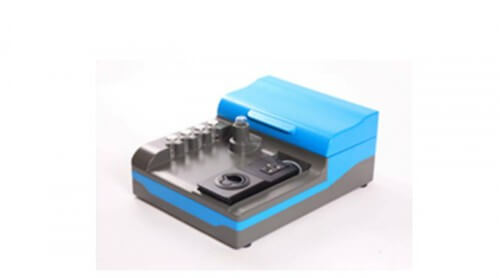Researchers from Tel Aviv University have developed a sensor consisting of a chip carrying billions of nanometer sensors, each of which is a kind of thin silicon hair, coated with the material that reacts with a certain type of explosive.

Almost every substance scatters around it individual molecules that float in the air around us. Explosives also leave such a fingerprint, but their detection is not simple, because they are individual molecules in air that also contains many molecules of many other substances. Now researchers from Tel Aviv University have developed a unique detector that may solve the problem. It consists of a chip that carries billions of nanometer sensors, each of which is a kind of thin silicon hair, coated with a material that reacts with a certain type of explosive. Because of the tiny scale of these sensors, the binding of a few molecules of explosive already changes the electrical conductivity of the sensor. This allows the system to know quite accurately how many molecules have been bound to the entire device, and to deduce their concentration. Because each such detector includes hundreds of sensors for each type of explosive, the device is also less prone to malfunctions than other detectors (which are based on a single sensor), is sensitive to even the tiniest concentrations of explosive in the air - several orders of magnitude more than any sniffer dog, the researchers say - and is able to weigh the information from all the sensors and convey to its operators information about the type of explosive and its concentration. The researchers sold the development rights to a commercial company, tracense, and it is now testing it to make the detector a commercial product. "We anticipate that in a year these detectors will already be in use," says Prof. Fernando Patolsky, head of the development team. "It is difficult to estimate the market value of the detector, because so far there has been no detector with such capabilities, but I estimate that we will create a new market of different apps and applications, a market whose value could reach billions of dollars." Petulsky and his colleagues estimate that it is possible that within a year the detector will already be offered for commercial marketing.
Explosives detection is indeed a very important development, and it pays off financially, but the sensing technology developed in Prof. Petulsky's laboratory can be adapted to a wide variety of other applications. "With other materials on the detectors, these detectors can be used to detect drugs, biological materials to diagnose diseases, materials that emit bacteria or insects, agricultural, medical, security and environmental applications. The sky is the limit," says Petulsky. Today, a method is being developed in his laboratory for the very early diagnosis of cancer, through the ability to absorb and identify very low concentrations of certain substances. They are also trying to develop a personal test of the effectiveness of the treatment, that is, to examine in a particular patient which medicine achieves the most effective results in the fight against the tumor.

One response
See the Israeli ms-tech company